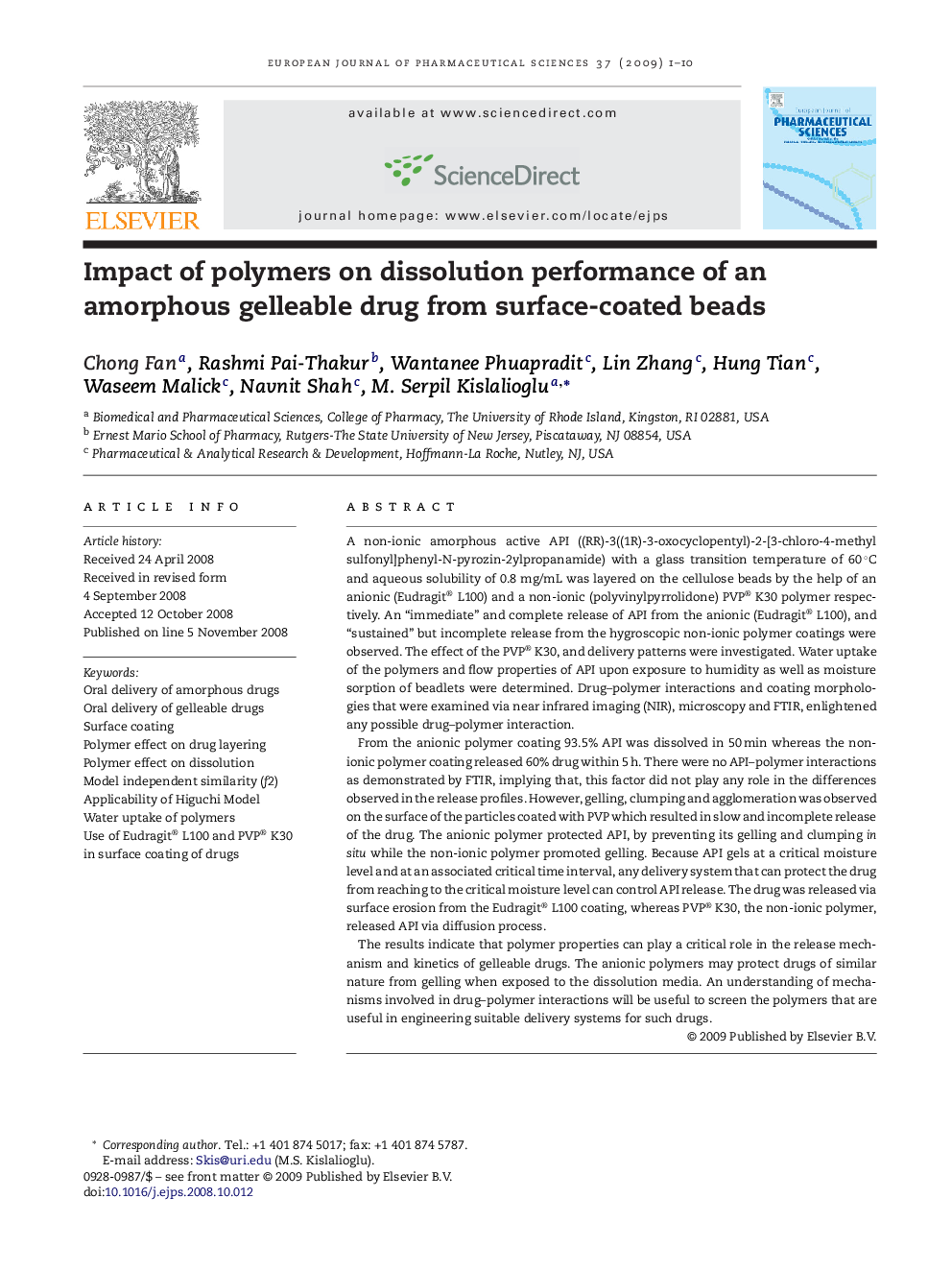| کد مقاله | کد نشریه | سال انتشار | مقاله انگلیسی | نسخه تمام متن |
|---|---|---|---|---|
| 2482252 | 1556260 | 2009 | 10 صفحه PDF | دانلود رایگان |

A non-ionic amorphous active API ((RR)-3((1R)-3-oxocyclopentyl)-2-[3-chloro-4-methyl sulfonyl]phenyl-N-pyrozin-2ylpropanamide) with a glass transition temperature of 60 °C and aqueous solubility of 0.8 mg/mL was layered on the cellulose beads by the help of an anionic (Eudragit® L100) and a non-ionic (polyvinylpyrrolidone) PVP® K30 polymer respectively. An “immediate” and complete release of API from the anionic (Eudragit® L100), and “sustained” but incomplete release from the hygroscopic non-ionic polymer coatings were observed. The effect of the PVP® K30, and delivery patterns were investigated. Water uptake of the polymers and flow properties of API upon exposure to humidity as well as moisture sorption of beadlets were determined. Drug–polymer interactions and coating morphologies that were examined via near infrared imaging (NIR), microscopy and FTIR, enlightened any possible drug–polymer interaction.From the anionic polymer coating 93.5% API was dissolved in 50 min whereas the non-ionic polymer coating released 60% drug within 5 h. There were no API–polymer interactions as demonstrated by FTIR, implying that, this factor did not play any role in the differences observed in the release profiles. However, gelling, clumping and agglomeration was observed on the surface of the particles coated with PVP which resulted in slow and incomplete release of the drug. The anionic polymer protected API, by preventing its gelling and clumping in situ while the non-ionic polymer promoted gelling. Because API gels at a critical moisture level and at an associated critical time interval, any delivery system that can protect the drug from reaching to the critical moisture level can control API release. The drug was released via surface erosion from the Eudragit® L100 coating, whereas PVP® K30, the non-ionic polymer, released API via diffusion process.The results indicate that polymer properties can play a critical role in the release mechanism and kinetics of gelleable drugs. The anionic polymers may protect drugs of similar nature from gelling when exposed to the dissolution media. An understanding of mechanisms involved in drug–polymer interactions will be useful to screen the polymers that are useful in engineering suitable delivery systems for such drugs.
Journal: European Journal of Pharmaceutical Sciences - Volume 37, Issue 1, 11 April 2009, Pages 1–10